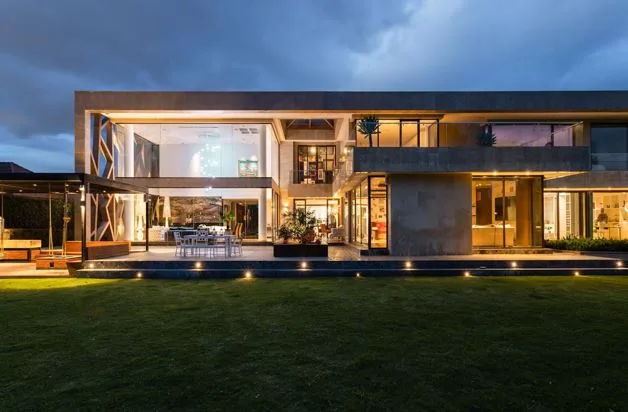Top Architecture Trends Influencing Modern Residential Design
In recent years, residential architecture has undergone a dramatic transformation. Driven by changing lifestyles, environmental concerns, advances in technology, and shifting aesthetic preferences, today’s homes look and function very differently from those built even a decade ago. Whether you’re building a new home, renovating an existing one, or simply dreaming about your ideal living space, understanding the top architectural trends can help guide your decisions. To explore how these trends are being applied around the world, check out the residential project features on illustrarch.com.
Here’s a deep dive into the key architecture trends influencing modern residential design in 2025 and beyond.
- Sustainable and Eco-Friendly Design
Sustainability is no longer a luxury—it’s an essential component of residential architecture. Homeowners are increasingly concerned about energy efficiency, environmental impact, and long-term cost savings. Architects are responding with green design strategies that include:
- Passive solar design: Optimizing home orientation and window placement to reduce heating and cooling needs.
- Energy-efficient materials: Use of recycled steel, reclaimed wood, low-emissivity windows, and advanced insulation.
- Green roofs and walls: These not only insulate buildings but also purify the air and manage stormwater.
- Renewable energy systems: Solar panels, geothermal systems, and battery storage solutions are being integrated into new builds and renovations.
Eco-conscious design doesn’t just save money—it adds value and promotes well-being, making it a top priority in modern home design.
- Biophilic Design Principles
Biophilic design emphasizes the connection between people and nature. By incorporating natural elements into the architecture and interior design, homes become more tranquil, healthier, and emotionally nurturing.
Key elements include:
- Natural materials: Stone, wood, bamboo, and clay are popular choices.
- Indoor gardens and water features: Creating spaces where greenery can thrive, even inside.
- Large windows and skylights: Maximizing daylight and outdoor views.
- Seamless indoor-outdoor living: Expansive glass doors that open fully, outdoor kitchens, and patio spaces with living room comforts.
This trend is particularly strong in urban areas, where nature is often limited. A home that brings the outside in becomes a sanctuary from city life.
- Open and Flexible Floor Plans
The days of rigidly defined rooms are fading. Today’s homeowners want spaces that can evolve with their changing needs—whether it’s working from home, raising a family, or hosting gatherings.
Some key features include:
- Open-concept living areas: Kitchen, dining, and living spaces blend together to foster connection and accessibility.
- Multi-purpose rooms: Guest bedrooms that double as home offices or yoga studios.
- Movable partitions and sliding doors: Offering privacy when needed, without permanent walls.
This flexibility reflects the increasingly dynamic nature of modern living, especially in the wake of remote work and hybrid lifestyles.
- Smart Home Integration
Technology is no longer an afterthought—it’s embedded directly into the architectural blueprint. Smart homes offer convenience, security, and energy savings, and today’s architects are designing with digital ecosystems in mind.
Modern residential designs often feature:
- Automated lighting and HVAC systems: Responsive to occupancy, time of day, and outdoor weather.
- Voice-controlled appliances: Integrated with platforms like Amazon Alexa or Google Assistant.
- Security systems: With smart locks, cameras, and remote monitoring.
- Whole-home connectivity: Seamless integration of Wi-Fi, speakers, and charging stations throughout the house.
As technology continues to evolve, homes are becoming more personalized, intuitive, and efficient.
- Minimalist Aesthetic with a Personal Touch
Minimalism remains a strong influence, with its emphasis on clean lines, uncluttered spaces, and purposeful design. However, the stark minimalism of the past is giving way to a warmer, more personalized interpretation.
Today’s minimalist homes might feature:
- Neutral color palettes with natural textures.
- Thoughtful storage solutions that keep clutter hidden.
- Statement pieces—a striking piece of art or bold lighting fixture—that reflect the homeowner’s personality.
This blend of simplicity and warmth creates spaces that are both calming and characterful, making it easier to relax and feel at home.
- Prefabrication and Modular Construction
Prefabricated and modular homes are no longer just budget alternatives—they’re now leading the charge in innovation and design quality. Thanks to improved manufacturing technology, prefab homes can be built faster, cheaper, and often more sustainably than traditional construction.
Benefits of this approach include:
- Speed: Components are built off-site and assembled on location, significantly reducing build time.
- Cost-effectiveness: Less labor and waste compared to conventional construction.
- Customization: Modular designs can be tailored to suit different tastes and layouts.
- Quality control: Factory production ensures consistent standards and fewer construction errors.
Architects are using these methods to create cutting-edge residential designs without compromising quality or aesthetic.
- Compact and Efficient Urban Living
With urban populations growing and space at a premium, architectural solutions are focusing on compact yet comfortable living. Micro-homes, tiny houses, and accessory dwelling units (ADUs) are gaining popularity, especially among younger homeowners and retirees.
Trends in this area include:
- Vertical living: Multi-story layouts that maximize limited footprints.
- Built-in furniture: Space-saving designs that blend form and function.
- Creative storage: Under-stair drawers, ceiling-height shelves, and hidden compartments.
Urban architecture is redefining luxury—not as size, but as smart, intentional design that meets every need in minimal space.
- Resilient and Climate-Adaptive Architecture
Climate change is influencing architecture in profound ways. From wildfires to floods, homes need to be more resilient to extreme weather events and environmental shifts.
This has led to:
- Elevated structures: In flood-prone areas, homes are being raised or built on stilts.
- Fire-resistant materials: Like concrete, steel framing, and tempered glass.
- Storm-proof windows and roofing systems.
- Backup energy and water systems: Including rainwater harvesting and home batteries.
Resilient design is about more than survival—it’s about creating homes that offer security and peace of mind in a changing world.
- Heritage and Local Design Influences
While modern architecture often celebrates innovation, there’s a growing appreciation for local traditions and materials. Architects are blending modern styles with regional craftsmanship, history, and climate responsiveness.
This can take the form of:
- Incorporating traditional facades or rooflines into modern structures.
- Using locally sourced materials that reduce environmental impact and reflect the area’s identity.
- Cultural storytelling through architecture, especially in indigenous and historical contexts.
The result is homes that are not only beautiful but deeply rooted in their environment and culture.
- Wellness-Centered Architecture
Finally, wellness is becoming a cornerstone of residential design. Beyond aesthetics and function, architects are considering how homes can actively contribute to health and happiness.
Wellness features might include:
- Improved air and water quality: Through ventilation systems and purification technologies.
- Natural lighting: To regulate circadian rhythms and boost mood.
- Noise reduction design: Insulation and layout that promote peace and quiet.
- Spa-inspired bathrooms and meditation spaces that promote relaxation and self-care.
These designs align with a broader lifestyle movement that prioritizes balance, mental health, and holistic well-being.
Conclusion
Modern residential architecture is a fascinating intersection of technology, nature, sustainability, and evolving human needs. These trends reflect not just where we live, but how we live—prioritizing comfort, health, and harmony with the environment.
As these architectural innovations continue to evolve, one thing remains clear: the future of home design is smarter, greener, more flexible, and more inspiring than ever before.




